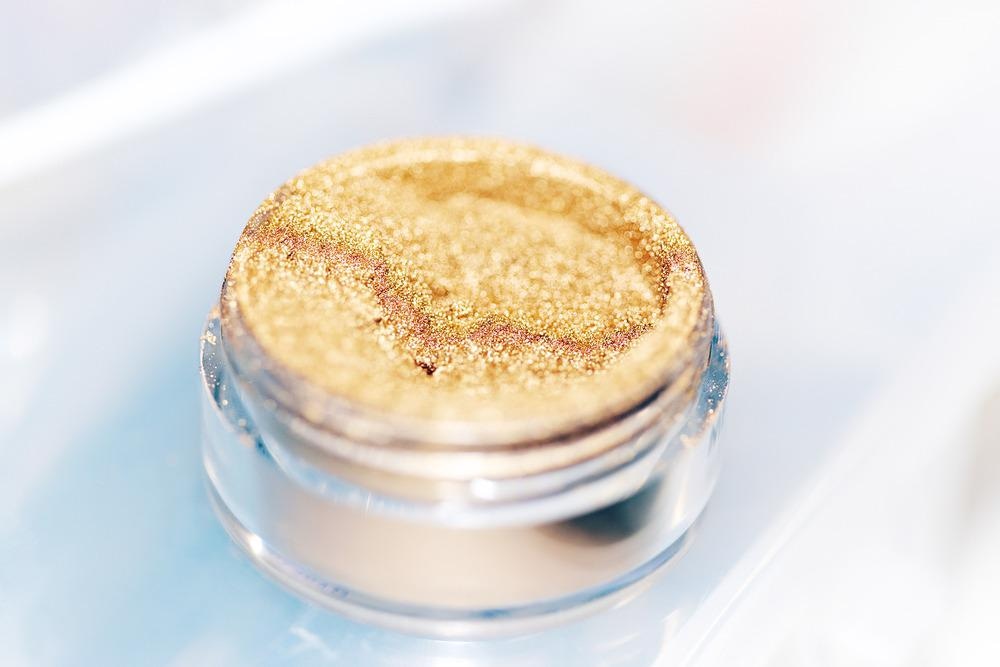Glitter is often made using microplastics and toxic compounds. This is obviously problematic, as the manufacture of this product can cause plastic pollution and environmental damage. Now, a type of glitter has been produced, which uses materials derived from plants instead of synthetic materials. The research has been published in Nature Materials.

Study: Large-scale fabrication of structurally coloured cellulose nanocrystal films and effect pigments. Image Credit: iconogenic/Shutterstock.com
Glitter and Microplastics
Glitter is traditionally made from colored plastic sheets. It is used in a wide variety of products, including art and craft supplies and cosmetics. When it is disposed of in drains, it enters the ocean and contributes to the growing problem with microplastic (particles under 5mm in length) pollution.
Microplastics are such a problem that they are found in every marine environment, from the surface to the seafloor. They are consumed by marine organisms, which then pass them into the food chain. Microplastic accumulation in the stomachs of birds can lead to death by starvation. They are also consumed by human populations when fish and shellfish are eaten.
The two main sources of microplastics are from larger plastic objects such as packaging and nets, which are degraded by sunlight, mechanical action, and chemical action, and from microbeads. Microbeads do not degrade at all and are likely to proliferate in the oceans for hundreds of years according to some studies. According to National Geographic, it is estimated that up to 8 trillion microbeads entered US waters daily in 2017. Many countries are now banning or have banned microbeads in products.
A More Sustainable Glitter
The amount of glitter that enters the ocean and becomes microplastics is unknown, and the pathways by which it arrives in the oceans are similarly unclear. According to Alice Horton, a research associate at the Centre for Ecology and Hydrology in the UK, there is no concrete data on glitter accumulation in the oceans. Richard Thompson of the University of Plymouth has stated that, out of 500 fish in the English Channel that were examined, glitter was found in none of them.
There have been calls for a ban on glitter, but experts argue that this may be premature given the lack of scientific evidence. Regulatory measures or companies acting of their own volition may be more effective intervention strategies. One example of companies taking action is the cosmetic manufacturer Lush, which has replaced plastic-based glitter in their products with mineral and mica glitter and starch-based materials. Slowly, plastic glitter is being phased out of the market.
Are Microplastics in Our Water Becoming a Macroproblem? | National Geographic
The problem of microplastics. Video Credit: National Geographic/Youtube.com
Using Plants for Glitter
Writing in Nature Materials, a team of researchers has developed a new type of glitter which is based on plant materials. Specifically, the team has focused on the development of cellulose nanocrystals for this purpose, which are colloidal particles that can form photonic films.
Cellulose nanocrystals achieve this by a process of self-assembly driven by solvent evaporation. These nanocrystals are renewable and biodegradable. Studies on these natural materials and their process of self-assembly have been limited in scale thus far. The challenges with achieving industrial-scale production of these materials have largely not been considered.
To address the limitations with the industrial-scale production of cellulose nanocrystals, the team behind the study developed a process whereby an aqueous mixture of nanocrystals was poured onto a plastic sheet. As it dried into a film, the fibers formed structures in the shape of spiral staircases. By adjusting the steepness of the stairs, the wavelength of reflected light could be changed. In turn, the color of the film was adjusted. The team created ribbons of different-colored material that could then be ground up into glitter.
The inspiration for the research came from the iridescent blue fruits of Pollia condensata, an African plant. More commonly known as Marble Berries, their metallic blue color is caused by cellulose fibers reflecting light in specific ways. The cellulose used by the team came from wood pulp. Many other natural materials contain cellulose, including left-over cotton fibers in the textiles industry. Using waste fiber would make this process a circular one, reducing textile waste alongside potential microplastic waste from glitter.
The Future
The global production of glitter has an unknown effect on microplastic pollution in the oceans, as well as the harmful effects of toxic and potentially carcinogenic materials used in its production. By developing a novel type of glitter based on cellulose fibers that can easily be sourced from wood pulp and fruit skins or from textile waste, the authors behind the study in Nature Materials have presented a more sustainable and environmentally friendly alternative.
The team has stated that the environmental impact of this new glitter needs to be tested. However, they are hopeful that it will become a viable alternative to current unsustainable materials used in glitter manufacture.
Further Reading
Drouget, B.E et al. (2021) Large-scale fabrication of structurally coloured cellulose nanocrystal films and effect pigments [online] Nature Materials | nature.com. Available at: https://www.nature.com/articles/s41563-021-01135-8
Parker, L (2017) To Save the Oceans, Should You Give Up Glitter? [online] Nationalgeographic.com. Available at: https://www.nationalgeographic.com/science/article/glitter-plastics-ocean-pollution-environment-spd
Disclaimer: The views expressed here are those of the author expressed in their private capacity and do not necessarily represent the views of AZoM.com Limited T/A AZoNetwork the owner and operator of this website. This disclaimer forms part of the Terms and conditions of use of this website.